|
While white people profit off mimicking Asian features, people who look like me are dying from them. I have always paid attention to black-fishing and its unfortunate prominence in American culture as we see with popular celebrities such as the Kardashians. However, I never thought I would someday be fighting a similar battle over my own features. While I am proud to see Asian culture such as our music and entertainment rise in popularity, it pains me to watch our culture and even physical features become trends and rebranded as fashionable. It disgusts me to watch Asian features such as “fox eyes” or aesthetics like “anime core” or even “Japan core” be adopted and culturally appropriated by white men and women, who ultimately profit off them at higher rates than Asians. It is especially infuriating to watch white women adopt “kawaii” or “alternative” personas in order to sexualize themselves in the same fashion as anime characters. This persona further perpetuates the over-sexualization of Asian women and the harmful stereotype that they are “easy” and desperate. While white people continue to profit off of a persona based on negative stereotypes surrounding my culture, wear my features like an accessory, and freely enjoy aspects of my culture I was once bullied for, Asian hate crimes spike and people who look like my parents, grandparents, friends, and neighbors continue to be killed in the streets. Asian features are not an accessory that you can just choose to wear as it suits you. Us people of color live with these features daily, and must face the discrimination, oppression, and even violence it may bring us. It is an extreme privilege to simply hop on a trend based off the culture and features of POC without having to face an ounce of the oppression and discrimination we face. It is exhausting, as a person of color, to have to continuously defend your culture while watching Caucasians steal and be praised for enjoying aspects of your identity you cannot even freely enjoy. Although I am fortunate enough to only hear about accounts of these hate crimes, I hate to think of what could happen to my relatives and friends, who are living cautiously on the mainland. Seeing that the typical victims of these hate crimes are older members of the Asian community only reaffirms the fact that these violent perpetrators are just adult bullies. More needs to be said, more needs to be done— the list of necessary actions and responses are endless. I will continue to do my part by paying attention to the news, educating myself and others, and donating, and I encourage you all to do the same. The fight for Asian lives has always subsisted, but the war is now. It’s more than just a hashtag, do your part to protect Asian lives.Although I am fortunate enough to only hear about accounts of these hate crimes, I hate to think of what could happen to my relatives and friends, who are living cautiously on the mainland. Seeing that the typical victims of these hate crimes are older members of the Asian community only reaffirms the fact that these violent perpetrators are just adult bullies. More needs to be said, more needs to be done— the list of necessary actions and responses are endless. I will continue to do my part by paying attention to the news, educating myself and others, and donating, and I encourage you all to do the same. The fight for Asian lives has always subsisted, but the war is now. It’s more than just a hashtag, do your part to protect Asian lives. Author: Akiko Anna IwataDeclarASIAN Blog Contributor
0 Comments
The unusually squat-shaped mechanical pencil that rests in the forward compartment of my desk organizer is one of the few pleasures to be found in completing a lab packet, but only one of many delights I have from stationery shopping. Its pale shamrock-green grip, comfortable hold, and conveniently capped eraser lure me deeper into the rabbit hole of stationery shopping. My supply of stationery is more than enough to last me a lifetime, an assortment of adorable animal pens, colored ink ones, partially used notebooks, happy birthday pencils, pencil cases, mechanical pencils, washi tape, stickers, and a miscellany of pens received from events over the years. The relationship I share with my stationery has never wavered, a love born out of elementary school, China trips, and participation pencils received for minimal effort. But in all these moments, the stationery I’ve purchased and received plant stories and emotions, each tied to a particular pen, pencil, and paper and different from the next. Nearly every summer, my family and I board the 13-hour flight headed to Beijing, China, and a few weeks of unending fun. Along with the joys of seeing our relatives and inhaling the familiar scents of city and food, shopping is something I look forward to—stationery shopping, specifically. Of all the relatives on my mom’s side, my aunt is my favorite (no hard feelings!). Each time we return to this busy city, she never fails to bring us to restaurants that cook with the best ingredients, tourist destinations, and enormous, brightly lit malls. Each day is like a treasure hunt, each new discovery never that far off. Last August, my aunt took us to five malls, some familiar, others newly constructed, each with exquisite restaurants, clothing brands like Nike and Adidas, and of course, stationery stores. The malls buzz with the same endless energy, a hum of giggling children, young couples, and stationery fanatics such as myself. Why would I be bubbling with such enthusiasm, when I could purchase the same adorable pens on Amazon from the comfort of my own home? Well, for one, there are the affordable prices assigned to each aesthetically pleasing pen, paper, and sticker pack. Forget about pricey Muji pens or expensive Faber-Castelle pencils! Here, where the selection of micron pens fills shelves, purchasing them in-store is no question, and the uniqueness and quality of each pen deserves applause. Unlike the happy birthday pencils teachers hand out with a plastered smile, the smooth, glossy mechanical pencils I select from these aisles give off an exuberant feel that tingles even after I dump my findings into a paper shopping bag. There’s a sense of satisfaction, pleasure, and relief, like each notebook is designed and personalized for me and the store manager knew I would be the one to choose it. Sometimes, as I dive deeper in the stationery shopping journey, the electrifying sensation of picking up the perfect pen feels like it will last forever. But alas, as our days in China begin to count down, we pack our bags, stuff the goodies we’ve found, and take them home where I distribute them among my desk organizers and drawers. Like the squat-shaped mechanical pencil that rests on my desk, the rolls of washi tape, stickers, and pens I’ve brought home from China each remind me of the day I bought it, how I felt picking it up, and the excitement of hearing my mother say, “Let’s get that one.” Sometimes, if I try hard enough, I can hear the music playing through the speakers, make out my aunt’s voice, and feel the tingles running through my fingertips once again. Author: Hannah HeDeclarASIAN Blog Contributor It’s a hard time at the moment. And “the moment” refers to not only the pandemic and what’s happening with racism and sexism but to any time spent existing as a POC, a WOC, LGBTQ+ or someone viewed as Other, as ‘on the outskirts of society’ (because ‘society’ as we know consists soley of straight cis white men amiright?) The toll on our mental health generally means that self care is vital. Protecting our peace is vital. This is a skill that needs to be developed and actively practised, particularly whilst living amongst a capitalist society with its’ hustle 24/7 values of productivity and visibility, and heavy social media use. For an activist, or a person who is outspoken about their values (for their personal or business or both) – there is a self placed pressure to be always an advocate/educator. To represent your community, to add your voice to the conversation because of lack of representation, because of heinous hate and violence against your community, because it’s so important. And it IS SO IMPORTANT. But, so is staying well. I write this because I had a situation recently in which, I did not call something out. Something racist against East Asians, in a white space – an online community of female founders/businesswomen. I did not educate a white person and try and prompt change, instead I left the space. Now, I’m the kind of person who ALWAYS says something. From challenging my teachers at school, arguing with drunk strangers in smoking areas outside bars, calling out work superiors and being forever labelled “difficult”, making family dinners uncomfortable by not letting things slide – to my detriment usually, I say something. I am also the kind of person who readily leaves spaces that do not serve me, toxic environments and people, buh-bye. There can be a push and pull between the two, and I’m here to validate the latter. The situation: A prominent Cool Female space, I’ve been a member for several years, it has some wonderful women doing great things, and upholding good values, some genuinely excellent intersectional feminists in there, myself included (meek humility begone!). However, the founder I’ve always found a little problematic. The brand she created always felt a bit “white feminist” - but the rock and roll edge tricked me. Rock and roll always tricks me, ever since I was a grunge-loving punky teenager, because it promotes values of The Outsider, of anti-establishment and emotional turmoil of being misunderstood. However, it’s also an incredibly white cis, often misogynistic space, in which I was almost never represented or really accepted in terms of my gender or skin colour/heritage. Anyway in this Cool Female space, the founder’s new business launched, and the name was an appropriation of an East Asian symbol. A very common Japanese figure that is easily recognisable as East Asian imagery, also popular to Chinese culture. To be perfectly honest, it’s often appropriated here in the UK - to the point where I have an Oliver Bonas candle in its’ image because I found the artwork so fricken cute, and because I’m problematic as well SMH. But she had chosen to name her company this, right amongst the Mahjong Line https://www.thecut.com/2021/01/the-mahjong-line-accused-racism-appropriation.html debacle, the death of Vicha Ratanapakdee, the rise in Asian hate crimes, and a good 6 months after the BLM protests in which white people assured us they were “doing the work”. This particular Founder gave her platform to Black business owners for a few months, organised Diversity & Inclusion workshops for her membership, all the ‘correct’ things to be doing. And then chose to name her new business, from a place of East Asian appropriation. So...I guess you learned absolutely f*ck all, and the ‘anti-racism’ stuff was all performative for your brand? The truth is, when I saw her new brand name, it cut me to the bone. Perhaps too much. I realised then just how affected I’d been, emotionally, by the rising tide of anti-Asian sentiment (and off the back of the anti-immigrant movement Brexit), the daily images of Asian elders who looked like my family killed in hatred, my peers being spat on in my UK streets, that bloody Domino’s ad – it had all taken a real toll on me. I crafted a well intentioned message to her, a DM to the Instagram of her new brand (launching in March 2021) – and I realised I didn’t have it in me. I couldn’t access my voice, usually so full of conviction and passion and punk-rock hard hitting clarity. I felt overwhelmed by my bruised heart, by the whiteness of the space, feeling like one voice speaking to a thousand heads all turned the other way, disinterested. I wrote a tiny-voiced friendly “Hey lovely, I guess you don’t realise, but...” message. So polite and apologetic, I hated it. I sent, and instantly deleted it. I realised that I really didn’t want to deal with what sending the message would bring. The gaslight-y message back, navigating the faux-friendly tone, the burden of having to ‘prove’ something is appropriation, having to stand up for my community in a way that does it justice when I felt so very small and sad, the guilt when I inevitably did it badly. And also – who was I ultimately helping? What was the ‘victory’ here? Who would my emotionally-triggering and draining efforts be for? To spare a cis white woman steeped in privilege, who cannot be bothered to do her own research. And, there is NO WAY she didn’t know the imagery has an ancestral home, that it belongs to a different culture with rich meaning that is not hers to take – she knows, she simply feels entitled to it. So, I took a few days off social media, tended to myself a bit – and ultimately, cancelled my membership with the group. I didn’t have it in me to have the conversation – which is a bit laughable, as I have spent a lifetime having much harder conversations – but, we are allowed to be affected by racism, to be traumatised, to be in pain. And we are allowed to protect our peace. We do not *have* to cut our wounds open and bleed all over white people who could just as easily do some cold basic due diligence and make another choice. Something that takes zero emotional toll on them, to spare poking at our already open wounds. There is an immense pressure on those of us with voices, to use them. However, and I learned this from years of working in charities – you cannot pour from an empty cup. Our mental health comes FIRST. And the onus sadly falls on the wrong people when it comes to injustice – on those it affects. On those it hurts, who are even as they speak of it, being eroded by its’ daily little cuts. The community does all the speaking up, educating, content creating – but what of the silent masses? When I was younger I wanted to be a documentarian, to educate and shine a light on injustice – people surely wouldn’t let injustices occur if they could only see it, understand it! I unconsciously carry this energy into my adult persona – the sense that surely people would all be outraged as me, if they only knew. They must not know, let me tell them! But the truth is, my truth is, my energy is better spent talking to my communities of interested people, than to the disinterested. So to my community, of Asians, but also of activists, of women, of Others, I say – we must take care of ourselves. We cannot control the opinions or behaviour of others. We can be committed to fighting injustice, and committed to protecting our peace. We do not have to over extend or over share ourselves. Our voices and energy are precious. Only advocate and educate as much as you are able without compromising your mental health. If we spend energy building up our community, we are better supported individually. We can let things slide when we need to, safe in the knowledge that another of us will pick it up. I think of it like staggered breathing in a choir. When a long note is sung, it can be sustained indefinitely, eternally, because it’s a collection of voices singing as one but is not only one. Each individual can take a breath, safe in the knowledge that the note continues on until they can rejoin it, then allowing someone else to breathe. That’s how we fight the good fight yet don’t burn out, how we take time to grieve and heal without dropping the message - by bringing our voices together. --- An aside: The founder’s brand I refer to here is as yet unlaunched – I’ve shared it with a trusted network of BESEA peeps, so we shall see. Author: Steph Dylan CawitanDeclarASIAN Blog Contributor We have been taking the past few days to try and process the tragic and unforgivable events that happened on March 16, 2021. For us and our families, it’s a reminder that being Asian-American today could mean you’ll be targeted for the way you look. But for the families and friends of those who passed away, it’s a void that may never be full again. So first, we would like to remember and honor the victims and their families: Xiaojie Tan Daoyou Feng Delaina Ashley Yaun Gonzalez Paul Andre Michels Soon Chung Park Hyun Grant Suncha Kim Yong Ae Yue Statements from DeclarASIAN Co-Founders: Carina Sun: "I live with my Chinese-American immigrant parents and my grandparents. I never used to worry about my own life or my parents’ when we’d go to the grocery store, or the mall, or the city. But now, I do. Every week when my mom goes grocery shopping, I get so scared. I remember the time a security guard didn’t let her in because she was Chinese, and she came home without buying anything that day. I remember when my grandpa went fishing, and was being taunted by a truck full of white men. He couldn’t understand them, so he just smiled and nodded. I remember all the times I was made fun of for having small eyes, being called slurs, given side-glances by strangers. I’m scared everyday for the safety of my family and my friends, who are targeted solely for the color of their skin. And it’s so sad and awful that this is our reality. The statistics that invade my mind when I leave my house: 150% increase in Asian-American hate crimes in the past year, 1900% in NYC. These may even be undercounted due to the many hate crimes that go unreported. This cannot keep happening, and it is up to us to continue fighting for our community and condemning these crimes." Claire Cao: "It is deeply concerning to me that #StopAsianHate was a cause my non-Asian friends only began to advocate once a terrible headline-making incident occurred and aesthetically pleasing infographics were made about it. This was truly the first time, I believe, since DeclarASIAN’s founding in 2017 that Asians were not the only ones speaking up for themselves. At many times in the past few years, I have felt like we’ve been hitting a dead end— how can we really make people care or make a tangible difference? How can Asians make real progress if we are the only ones looking out for ourselves while those who hold the power in our society turn a blind eye? And of course this sweet little PSA cannot just stop performative behavior, and I realize that movements are very much dependent on marketing, but the little bit of traction the Asian activism movement has gained recently makes me hopeful that wider audiences are finally waking up to Asian realities. Because of the model minority stereotype, Asians have never fit neatly into any easily-marketable narrative of struggle— yet the rise of Asian hate crimes has shone a glaring light upon the silent struggle they’ve endured as “perpetual foreigners” and the fight that they’ve been fighting alone. Our fight actually began long ago, from the first Asian Americans who fought against Exclusion and discriminatory citizenship laws in SCOTUS in the 1800s, to the murder of Vincent Chin in the 80s, all the way until now. And now, more than ever, is the time when Asian brothers and sisters could use others’ support the most. After headlines disappear and even the pandemic ends, Asian hate will not— it persisted long before and will persist long after. Can we count on your support for the Asian American community to persist as well? This doesn’t necessarily have to manifest into activism, protests, and infographics— it means calling out your own friends for their micro-aggressions. It means educating the young children in your life about what tolerance is. Though it seems that Asians’ status as Americans (both legally and socially) has been repeatedly questioned throughout history, helping them is just about the most American thing you can do right now." Here are some ways you can help:
1. Continue to spread awareness. It was amazing to see so many social media stories flooded with support for the Asian-American community these past few days, but it isn’t over yet. Asian-American hate crimes have been consistently happening for the past year – but they rarely have major news coverage. Unless we consistently condemn them and actively try to put a stop to them, they will keep happening. Share resources, share your support, share your voice. 2. Support and donate to Asian advocacy groups. Here are a few of our favorites. Asian Americans Advancing Justice Hate Is a Virus Asian American Legal Defense and Education Fund Asian Mental Health Collective Save Our Chinatowns 3. Support your local Asian-owned businesses. We can all help by reaching out to the Asian-Americans in our immediate communities, whether its classmates, teachers, restaurant owners, etc. and making them feel more welcome and secure. It’s a difficult and scary time for all Asian-Americans, and especially those who still have to go to work in the cities and run their small businesses. They are truly so, so strong. We can all do our part to make their days a little better by being there and supporting them. 4. Educate yourself. There is an alarming lack of focus on Asian-American and POC history in general in the U.S. education system. This contributes to the lack of awareness when situations like this arise. In order to become more aware, we need to start educating ourselves. Read books by Asian-American authors like Cathy Park Hong’s Minor Feelings, or Ronald Takaki’s A Different Mirror. Or, take a look through our history lessons highlighting Asian-American history posted for AAPI National Heritage Month. If it isn’t already, make it a priority to keep yourself educated on the history and current events of Asian-Americans, because it makes all the difference. To our readers: we truly hope you stay safe and take all the time you need to recover. The recent Atlanta shootings and the past year of non-stop Asian-American hate crimes is a lot to handle, and it takes time to process. The Asian-American community is going through a scary time right now, and we can all do our parts in coming together and supporting one another as much as possible. We are here for all of you, and hope that you and your families stay safe. -Carina & Claire 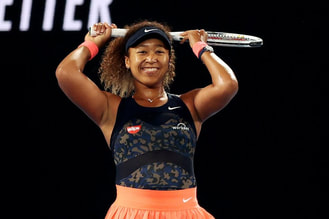 Naomi at the Australian Opening in Melbourne (credits: Logan Elliot, Reuters) Naomi at the Australian Opening in Melbourne (credits: Logan Elliot, Reuters) The 2021 Australian Open was a lot like many sporting events in the past year – empty, silent arenas that lacked the voices and cheers of fans. However, during one of the many matches played throughout the tournament, a small glimmer of hope found itself next to a Gland Slam champion. As a small monarch butterfly landed on her fingertips, Naomi Osaka treated it like the adversity she had faced throughout her career – with grace and passion. After carrying the butterfly to safety, Osaka proceeded to dismantle her opponent, winning every game in the match on her way to her fourth Grand Slam. The daughter to a Japanese mother and Haitian father, Naomi Osaka was born in Osaka, Japan and moved to the United States when she was three. At the same time, she was introduced to tennis, and throughout the years, she quickly rose through the Women’s Tennis Association (WTA) rankings. By 2018, Osaka was dominating against the best in the sport, winning the Indian Wells Open. Later that year, she conquered the US Open, beating several experienced opponents before reaching the final against her own idol while growing up, Serena Williams. There, she took down one of the best players of all time, 6-2, 6-4, and became the first Japanese Grand Slam singles champion. After the US Open, Osaka continued her ascendancy, winning her second Grand Slam at the 2019 Australian Open and becoming the first Asian player to be ranked No. 1 in singles. However, as COVID-19 struck the sports world and an emergence in social justice activism called athletes to use their platforms, Osaka, who had already shown the world her generational tennis talent, became a leader in the tennis community with activism. At the 2020 US Open, Osaka wore a different mask while she walked onto the court, highlighting George Floyd, Breonna Taylor, Elijah McClain, Ahmaud Arbery, Trayvon Martin, Philando Castile, and Tamir Rice. Additionally, she participated in protests in Minnesota, demanding racial equality and an end to police brutality in America. A young player rising up in the tennis world, Naomi Osaka is the definition of what it means to be more than an athlete. After winning the 2020 US Open and 2021 Australian Open, Osaka has become a key figure in the sports world, representing both black and Asian heritage. For me, Naomi Osaka is someone who lifts Asian American voices in a community where Asians are noticeably absent. As a former tennis player, I admire Osaka’s ability to play with intensity on and off the court. Whenever I think about my future as a Chinese American, I always wonder how the future generations of Asians will feel about their place in America; admittedly, I wasn’t proud of my heritage throughout my childhood. However, just like the butterfly that led to her victory in the Australian Open, Naomi Osaka has the ability to be the hope in a world still plagued with racism and discrimination. Through that, I can have hope that our culture and way of life will thrive with her. Author: Devin WuDeclarASIAN Blog Contributor 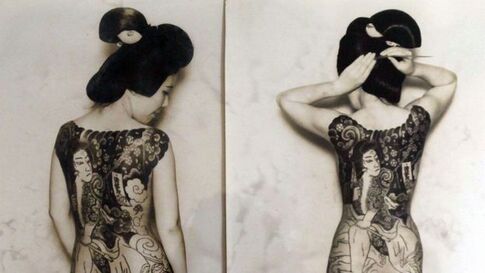 I recently got a tattoo for turning eighteen. My experience at the tattoo parlor was a mix of excitement, fear, nerves, and embarrassment. I had planned out my tattoo for the past few years and in the past have struggled with a fear of needles. I had no idea what to expect. My mom came with me and we entered a quiet, tiny shop to both of our surprises, with all Asian women tattoo artists. My mom was the only white person and together I felt that we were the loud Americans interrupting their craft. I felt embarrassed again while I instructed the artist with the size and placement as I interpreted her straightforward nature as impatience. Before long she prepared the materials and I was swiftly seated to be tattooed. The buzz started and I flinched while holding my breath, expecting unimaginable pain instead a light jiggling sensation with a pulsing needle lightly etching into my skin. After fifteen minutes, my simple line drawing was complete! The artist did a fabulous job with her clean crisp black lines and I walked, head held high, out of the shop. For many people the thought of getting a tattoo, let alone telling their parents they were potentially thinking of getting one would be unthinkable. There are many YouTube videos of Asians, specifically with conservative parents freaking out that their child has a fake tattoo on—claiming they have ruined their body. My own family has not had the same kind of reaction or attitude towards tattoos compared to a lot of Asian cultures. Growing up with white parents, I never had that gut wrenching feeling of shame many with immigrant parents feel if they go against their parents’ wishes. Since I went on a foreign exchange to Osaka, Japan and bonded deeply with my host family, I thought it would be interesting to ask my host sister and other friends their thoughts on tattoos. The reactions were all different. For the first time, I felt that flushed face, full of shame while reading their messages. All of them said that tattoos are associated with the infamous yakuza (aka. the Japanese mafia), and criminals, meaning most unapproved of tattoos. Furthermore, those with any tattoos, traditional ones too, are banned from onsens (温泉, public baths), pools, some gyms, and it can be difficult to find jobs. Two of my closest friends confessed they thought that tattoos were cute but the social stigma is too great. I wanted to know more about the history of tattoos in Japan to try and understand the stigma. Dating back to 14,000 BCE, Japan has a long history of tattoos. Even now, many indigenous tribes continue the tradition of tattooing. Why the sudden change? The answer was westernization. In an effort to become more ‘civilized’, the Meiji government banned tattooing in 1871 and it was not until 1948 did they become legal again. Tattoos became a way to label criminals or were a sign of societal rebellion. The stigma and secretiveness of tattooing remains as many Japanese tattoo shops keep a low profile to protect themselves from police raids. September 2020 was when non-medical tattoos finally became legal but in a recent boxing match, Kazuto Ioka stirred controversy by revealing a sleeve and abdomen tattoo. It was his December match that sparked discussions about the double standard and unfairness. His charges are yet to be determined but will not get special treatment, despite his world champion title, while other foreign tattooed competitors do not face any consequences. I find it jarring how the power shame can have lasting effects over a society. While I will probably never tell my host parents about my tattoo, I hope to share it with my Japanese friends and that younger generations become more accepting of them. One day I will be able to go to an onsen without fear of getting kicked out, but until then, my tattoo will be a special secret of my own. Author: Claire JunkinsDeclarASIAN Blog Contributor Growing up in a traditionally conservative culture, many Asian kids (including myself) looked for a rebellious outlet. I turned to the stereotypical emo-teenage-angst phase. I listened to the basics like My Chemical Romance, Green Day, and Panic! At the Disco. I also wore black religiously as a way to reject anything my parents liked. I was not very successful—I called myself emo but my parents didn’t let me go all the way enough to let me wear intense eyeliner and spike chokers. Admittedly, it was a phase that did not last very long, but it was one of my most memorable ones. Even now, I find myself going back to listening to bands that bring me back to middle school days. So, if you were a former emo Asian, I propose to you some edgy Asian bands you absolutely need in your playlists. Without further ado, here are my recommendations to my veteran emo Asian folks from a former edge-lord. 1. AtticAttic is a Bengali pop-punk band with a lot of influence from Western emo music. I think I found this band looking through articles to find hidden Asian band gems, and this got recommended. Attic has a lot more pop instrumentals than other bands that I found, but once you hear the tone of the lead singer, you can tell this band screams pop punk. For comparison, the lead vocal has that iconic nasal sound that reminds me of Green Day or Blink 182’s singers. Personally, this sounds like something my younger self would be more into. It has the traditional early 2010’s emo elements blended with modern pop aesthetics, which compliments each other very well. There are some people who have a burning distaste for pop punk, but I think that it is a genre that works well when executed properly, which Attic does. If you enjoy softer vocals, less screaming, Attic is definitely a band you need to check out to revisit your 2016 emo nostalgia. 2. Go LimIf you live in a traditional Vietnamese household that listens to Paris By Night and cai luong, do not show this to your parents because they will roast you. Apparently, this type of genre isn’t very appealing to Vietnamese elders, which I learned the hard way. To my parents, Go Lim was noisy and had meaningless lyrics, but to me (a certified rebel) this band speaks to everything I enjoy in an artist. Go Lim is an empowering band that brought the post punk scene to Vietnam. My favorite song from them is ‘Cac Ban Dung Nghiem.’ It’s such a fun song, and the juxtaposition between the lyrics and arrangement of the song is absolutely genius. The song follows a story that reflects daily school life of kids having fun and getting yelled at by their teachers. When I heard it the first time, I fell in love with the artist and their album Gai Lang. Unfortunately, the lead vocal passed away a few years ago and the band split up, leaving listeners with only one album. But, Go Lim is a band worth looking into if you enjoy experimental and funky music. This one was definitely one of my favorites, and one that should be remembered for their work. 3. Dir en GreyThis is just a classic, and there is no way around this fact. They have been together for longer than I’ve been alive, and despite this, they are still releasing music. In my opinion, you rarely go wrong with Japanese rock, and Dir En Grey is a prime example of that. Dir En Grey is a Japanese visual kei death metal band that has an insane discography. I am in love with all of their tracks, including their old ones, which is surprising (I am very picky when it comes to committing to metal bands). I prefer their newer albums compared to their older ones, but all of their tracks are still amazing nonetheless. Their songs vary in intensity with some tracks like ‘Ranunculus’ having softer vocals, whereas ‘Hageshisa to, Kono Mune no Naka de Karamitsuita Shakunetsu no Yami’ is just pure noise, screaming, and death growls--and I love it. In general, if you enjoy heavy metal and intense bands, Dir En Grey would be the best place to start when exploring Asian metal artists. I think they are just the standard of Asian artists in rock from their music to their aesthetic. 4. An Empty CityThis is your traditional metalcore band with a lot of bass boosts, screaming, yelling, and death growls. If you want aggressive, An Empty City would be one of your best bets. They are a metalcore band based in China, and I’m shocked that they are not as popular as they should be despite their undeniable talents. Death growls are very vocally straining, and the fact that the lead singer does this throughout the whole song in all of their tracks is extremely impressive to me. The instrumentals are just as strong as the vocals. In their song Monolith, the lead guitarist plays an insane riff that compliments the vocals and the drums. Overall, they deserve more hype and recognition for their work, but it would take a few more releases for me to be fully invested. Granted, they just recently began releasing studio tracks, but I hope in the near future, An Empty City is successful with their music. 5. ParvaazThis band I found while browsing my Spotify recommendations. Parvaaz is an Indian band which has a more alternative progressive discography with a tamer sound compared to other bands. Many times when you focus on the instrumentals, you can hear the rock influences in their music, especially in their older songs like ‘Beparwah’. The lead vocalist has a voice that is extremely unique, with a soft yet powerful tone. If you’ve watched the Korean show ‘Super Band’, the lead’s voice reminds me of Purple Rain’s lead Chae Bo Hoon. They both have soulful voices, and it really adds to their strong sound. Parvaaz is, again, a lot softer than the other bands that I recommended, but it is still a great band to consider listening to. If you have an appreciation for alternative rock or neo-folk, I think that Parvaaz would fit your music taste perfectly. 6. Rina SawayamaRecently, I came across sludge metal while listening to random Spotify playlists, and met Rina Sawayama. I wanted to include a western Asian artist in my recommendations, plus I thought Rina should be mentioned at least once when talking about Asians in modern music in general. Rina is a Japanese-British artist that mostly focuses on the pop genre. I found her through her song STFU!, a nu metal song that blends pop and heavy metal. The way she transitions from ballad like vocals into aggressive sludge vocals was so surprising since not many artists do that. I especially love and look out for bands that experiment with different genres like Rina does. Most of Rina’s songs in general are a blend of pop with electronic music, but a select few of her songs incorporate nu metal elements into them, which is great if you prefer less intense songs. I would also mention the cinematic masterpiece the music video for STFU! was. It addresses Asian stereotyping and the condescending treatment towards Asian women, and is so amazing to see in mainstream work. Overall, Rina Sawayama is an absolute must to have in your playlist whether you enjoy rock or not She always has a song that fits anyone’s taste. There is so much good music out there that people refuse to listen to because of the supposed ‘language barrier’. I will never stop telling people this: if you don't listen to songs outside of your native language, you are missing out because there is a whole other world of art out there. You don’t need to go through an emo phase to listen to emo music, just like you don’t need to understand a song to enjoy it. Western music is so dominant in international mainstream music, which is not inherently wrong. But, because of the saturated influence of western artists worldwide, this dilutes foreign artists and their presence in the music industry, both domestically and internationally. You are not entitled to purposely go out of your way to listen to artists for the sake of diversity, but it is definitely enriching to experience interpretations of genres from foreign artists. One of my favorite resources to find new Asian artists is Unite Asia, which is a website dedicated to promoting rock bands from everywhere in Asia. My taste is constantly changing, and I am still looking for artists who experiment and produce good music. I encourage you to do the same, regardless of the popularity, genre, or language! Author: Quynhnghi TranDeclarASIAN Blog Contributor Worries ricocheted against the walls of my thoughts, my face pale and fingers limp. Tap class is nothing to worry about, I reassured myself as I walked in, but I couldn’t help noticing the older girls who had already reconnected after winter break, giggling and giving others side-eyes. “Oh my god, you went to the Bahamas over break?” “She literally went to Italy for three days. I can’t believe it.” I sighed, the exasperation in my breath lingering in the air. Already being in the advanced tap class for a year and half, I still had no clue how I’d put up with girls two, three — even four — years older than me who’d formed exclusive cliques with their friends at school. There were only two other Asian girls in my class, both a year older than me and close friends at school, so I never summoned the courage to strike up a conversation with them. The freedom I felt when I danced was the single strand threading the thoughts of quitting and pushing on together. The peeling beige paint on the walls of the dance studio hallway cried out for help as I crossed to the opposite side of the room, relieved to have found a place to dodge stares. The tote bag with my tap shoes resting inside weighed heavily on my shoulder, adding to the emotional baggage this class had brought me. “Come on in, girls!” Mrs. Rachel called, motioning for us to enter the wooden-floored studio with a gentle smile. So she’s still the only genuine person here, I concluded, having had Mrs. Rachel as an instructor for three consecutive years. With routine, we filed into the room and began shedding our winter coats for short sleeves and athletic wear, putting on our tap shoes, and taking our places for the warm-ups. As I stepped onto the dancefloor, the metal slabs of my tap shoes struck the wooden panels, sending an echo into the chorus of click-clacking tap shoes. In the midst of excited chatter, I made my way over to the front row of the upper left side. Striding over to her speaker, Mrs. Rachel cranked up the volume for “Uptown Funk” by Bruno Mars, pushing a steady beat with her feet. Tap, tap, step, tap. Bam, pat, bam. “Shuffles!” she shouted. We brushed our feet forward and back, simultaneously moving our legs in a clockwise motion. Front, side, back, ball change, I muttered under my breath, trying to stay present in the exercises. “Pas de Bourrées!" Bruno Mars now reached the song’s peppy chorus, singing with passion. The rhythm of the music reverberated around the room, bouncing off the walls and against my sore temples. I could no longer concentrate on the warm-up, now in a headspace far, far away. The tick of the clock fell silent. I envisioned the first time I wore tap shoes, when I didn’t know what one hour every Tuesday could do to me. In truth, I’d never planned on attending tap dance class for this long — almost three years. It was meant to be a feel-good hobby, a chance to live out my dream of dancing, but not in a class like this, where no one acknowledged or spoke to me. Was it that I wasn’t wearing Lululemon? Or that my hair wasn’t brunette with blond highlights? Most of the time I thought the source of my loneliness came from my Asian-ness, that in the sports world Asians were a minority and I couldn’t possibly break that barrier. Each Tuesday, a tug-of-war battled out inside my head. Quit, you don’t like coming here. No, just make it to the recital. Quit, you’re Asian. No, I’m still as good as them. This constant cycle drained my confidence as a normal teen and my love for tap dance, until I loathed the dance itself and felt insecure about myself, reaching my breaking point. That day in tap class, even Bruno Mars got on my nerves (which never happens). I couldn’t dance, couldn’t muffle out their high-pitched laughs like I did for so many months. And the freedom I once felt when I danced became a suffocating, dizzying sensation. My attention span probably lasted fifteen seconds before my mind broke off into another cycle of debate and thinking insecure thoughts. I couldn’t look Mrs. Rachel in the eye, only giving her a small nod before heading out. And as I stepped out of that building for the last time, winter clawed at my red cheeks and bit at my fingertips; like the wind, I wanted to scream into a pillow. So I did, revealing all that had been happening in that dance studio to my mother. And, to my surprise, she agreed to let me quit without hesitation. It was the idea that Asian moms never let you quit from what could be your next talent, which made me bottle up my exhausting thoughts until this moment. I remember feeling guilty for quitting a month prior to the final recital, for ruining the dance formation, but at the same time, I was so relieved to be rid of something that had damaged my self-esteem and twisted the pride I should feel as an Asian American. It was a phone call between my mother and Mrs. Rachel that ended Torture Tuesday. It was as liberating as empowering, the moment I truly felt I could be unapologetically Asian. Maybe I wouldn’t be able to tap dance, but I loved writing, making dumplings with my family, and getting boba with my friends. The dance studio might not be my happy place, but there were countless others. And I guess, countless other dreams to live out now, too. Author: Hannah HeDeclarASIAN Blog Contributor Annie Scherer is a New York-based indie-pop singer, and a second-generation descendent of Chinese immigrants. She was recently nominated for her local newspaper's "Best Local Performer" and in Times Union Annual as "Best of the Capital Region". She recently recorded a live performance of her original song, "Andy Warhol", in LA which will be aired on television sometime this year. Her music touched us, and so did her answers to our interview questions. 1. What inspired you to start creating music? "I’ve always had a profound love for music. I grew up listening to rock n’ roll classics like the Beatles, the Kinks, and the Rolling Stones. They’re still some of my favorite bands. I also began classical piano training when I was six, and I continued to perform piano for 13 years. " 2. What are your thoughts about the industry and Asian-Americans in the music industry currently? "It’s very bittersweet because on one hand, music is so accessible and widespread. But on the other hand, it’s harder to stand out and be heard. I miss when streaming didn’t exist, and you could only buy physical or digital copies. Ten years ago, the best present I could get was an iTunes gift card. I always had a list of songs I couldn’t wait to buy. 3. How has being Asian-American impacted your music/lifestyle? "I feel a strong responsibility to represent Asian-Americans in music, since there are so few of us. My family history and my ancestors’ success is something I strive to live up to. My grandparents are Chinese immigrants, and lived through a war before coming here. My grandmother was the daughter of a wealthy businessman in Shanghai. Meanwhile, my grandfather grew up in extreme poverty and wound up at Princeton. I want to make them proud." 4. What advice do you have for other young Asian-Americans who are thinking of going into music? "I always encourage people to follow their passion. It’s so rewarding, and the hard work pays off. We need more Asian-Americans in the music industry. I hope to empower other Asian-Americans to pursue music as a career by serving as a role model for them and helping to pave the way."  Thank you so much to Annie for doing this interview with us, and we are so excited to see Asian-American artists continue to rise up throughout the music industry. Listen to Annie's newest single, "After Rain", on Spotify here. While the majority of Japanese clothing stores sport relatively similar fashion and stick to the popular trends, Japanese thrift stores offer a variety of fun and quirky items from miscellaneous generations. 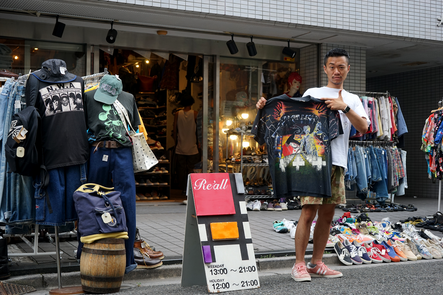 Cheap Japanese donation store chains include Family King. (image courtesy of matcha-jp.com) Cheap Japanese donation store chains include Family King. (image courtesy of matcha-jp.com) Compared to the United States, second hand stores are much more common and popular here in Japan. There are fairly cheap donation store chains like Family King, which is similar to Goodwill in the States, but there are also stores that sell exclusively high-end, designer items. In addition, there are chains like 2nd Street and Tin Pan Alley, which buy and sell designer and vintage goods. Second-hand shops like these are fairly priced, offer good quality and undamaged items, and have made eco-friendly and responsible shopping accessible to everyone. Besides donation and resale chains, there are also trendy, yet pricey boutiques (mostly in the city) which sell vintage (and often American) clothing. These stores are strictly curated to fit their aesthetic, and offer good quality, rare, fun, retro, and sometimes up-cycled pieces. Even in small cities far from Tokyo like Hamamatsu, you are bound to find a couple of these stylish vintage shops, in addition to the usual chain recycle stores. In contrast to the United States, where thrifting has only recently become trendy again due to environmental efforts and the rising popularity of Y2K and retro fashion, shopping second-hand in Japan is widely common. Even large non-recycle fashion brands like We-Go have “Used” sections in their stores. The popularity and abundance of thrift stores in Japan is no surprise considering their consciousness of the environment and unique fashion scene. If you are ever in Japan and are hoping to find some fun, vintage, and one-of-a-kind pieces, while supporting the environment, I highly recommend checking out the Japanese recycle shop scene. Author: Akiko Anna IwataDeclarASIAN Blog Contributor |
Archives
April 2021
Posts:Previous Years: |

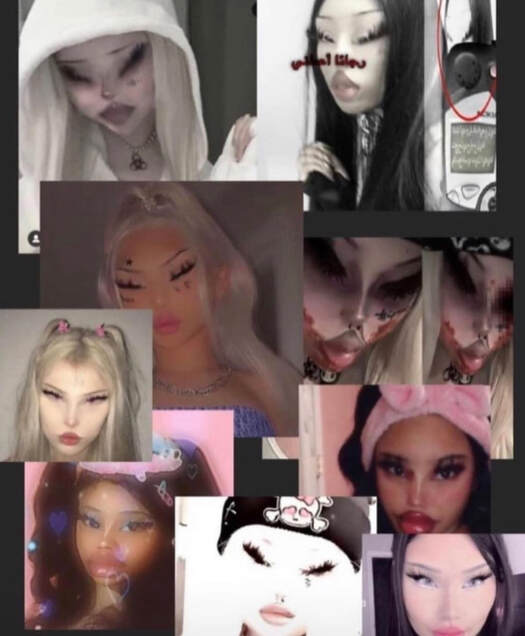
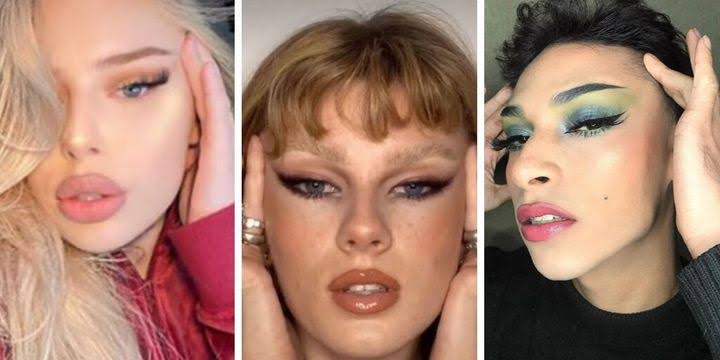
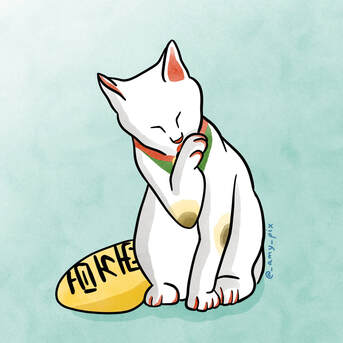
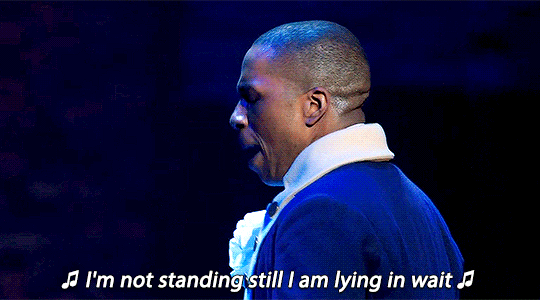
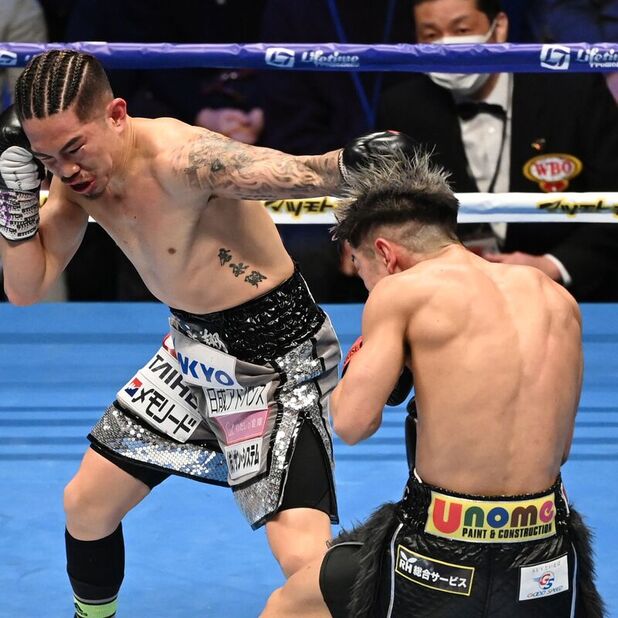
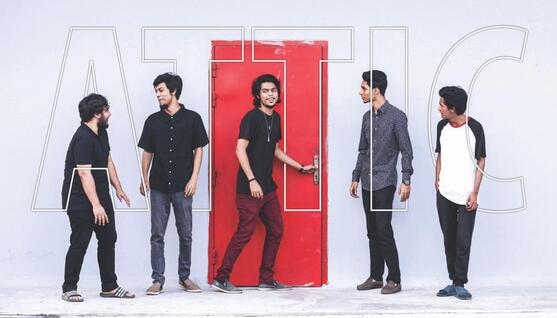
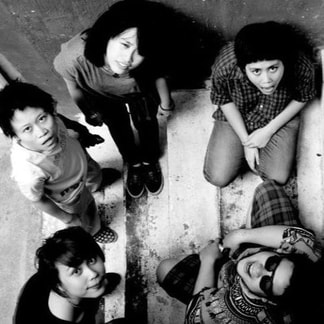
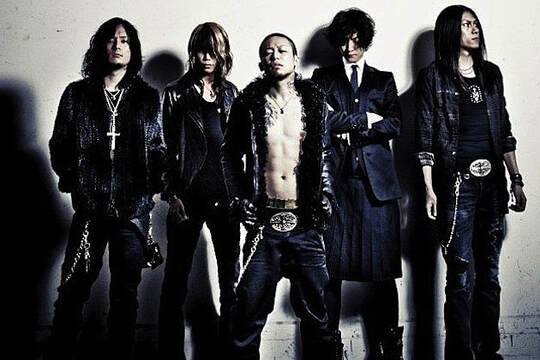
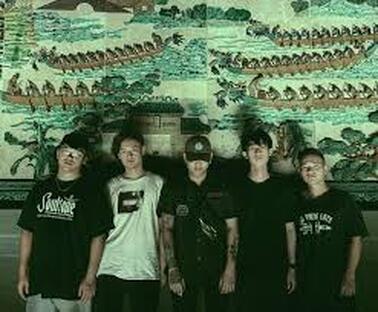
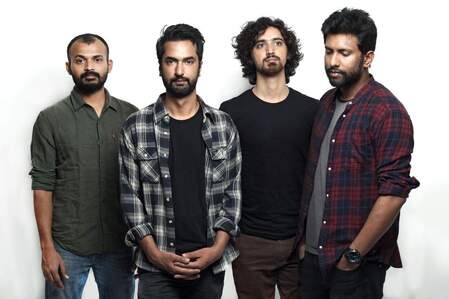
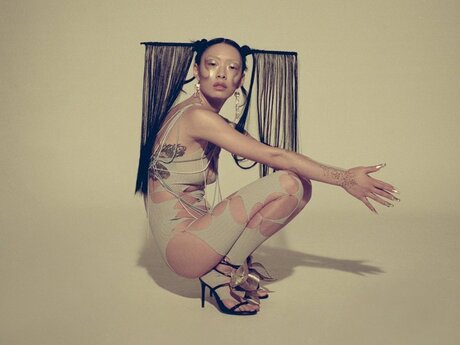
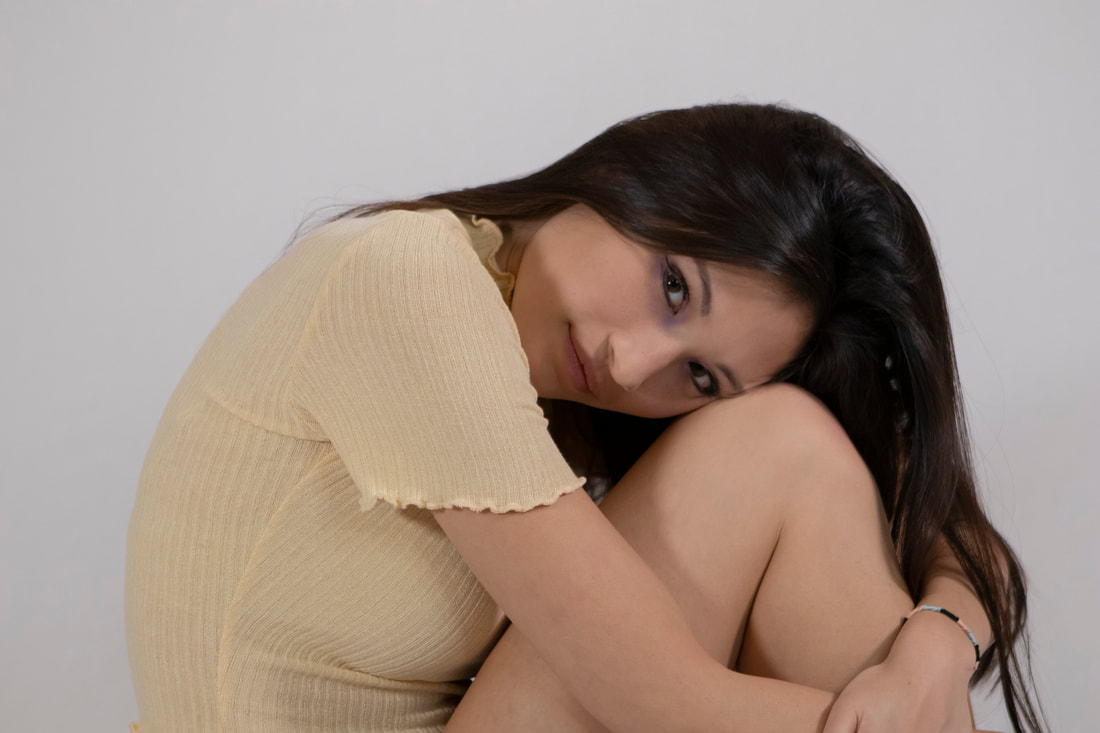
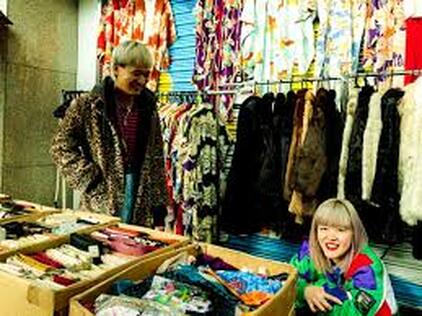
 RSS Feed
RSS Feed